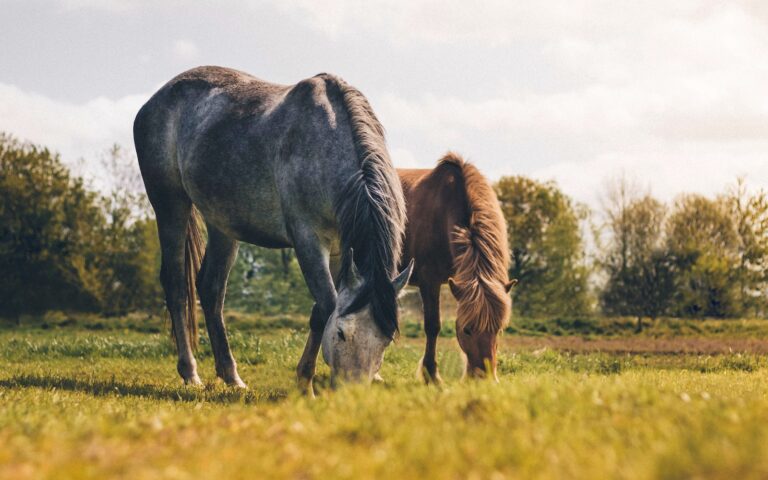Horses mate the same way as most mammals – through a process of courtship and copulation. But the process is not for inexperienced horse handlers or those who are squeamish about bodily functions!
In Miletski’s study of zoophiles, many reported preference for sex with dogs and horses. Many also stated that they enjoy fucking animals with big cocks.
Stallion Courtship
The first stage of breeding is stallion courtship, when a stud approaches and sniffs or licks the mare. She may move her tail or buck as an indication that she is receptive to breeding. She may also urinate and assume a breeding stance, with her head raised to expose the umbilical cord.
The next phase is mating, in which the stallion mounts the mare and penetrates her with his testicles. After penetration, the mare conceives and foals in about four to six months. The fetus develops in the uterus for 315-365 days, with the gestation period shorter for mares that conceive late in the breeding season.
A stallion usually attempts to breed a mare as soon as she enters estrus, the time of the month when she is most receptive to male attention. The stallion may prance, sniff, lick, nuzzle, or groom the mare in a series of behaviors called the courting ritual. If the stallion is unsuccessful in penetrating the mare, he will usually move away from her and allow her to continue her own sexual behavior.
A study of a herd of Sorraia horses found that male mate choice was not related to mare age, dominance status, or kinship with the stallion. Instead, the stallions selected mares that displayed the greatest behavioural receptivity to him during oestrus. Oestrous subordinate and barren mares kept closer proximity to the stallion during oestrus than did dominant or oestrous mares with foals, but this difference was not statistically significant.
Fertile Mare Courtship
Horses are oviparous animals, meaning they conceive and give birth to live young. This is accomplished through ovulation, which occurs during a mare’s estrus cycle. During this time, the mare is receptive to mating with a stallion. The duration of a mare’s estrus is about five to seven days. The normal breeding season for horses in the Northern Hemisphere is spring and summer, with a peak in activity in early spring as daylight lengthens.
Stallions initiate the courtship process by smelling, biting and nipping over a mare’s flanks, buttocks and tail. They also neigh to demonstrate their interest in the mare. The stallion then presents himself for mounting by taking an imposing stance and arching his neck to show off the muscles in his chest and shoulders. Once a mare accepts his advances, the stallion mounts her and inserts his accessory sperm glands (prostate and bulbourethral) into the female’s reproductive tract.
The sperm cells in a mare’s reproductive tract have a short life span—fresh semen remains viable for about 48 hours, while frozen semen lasts only 12 to 18 hours after the stallion has deposited it in the mare’s body. Hence, the mare must be inseminated as close to ovulation as possible. In some cases, a mare may be inseminated using frozen semen prior to her ovulation with the aid of an artificial vagina (AV) that simulates the mare’s uterus and collects semen for insemination.
Stallion Penetration
Stallion penetration involves the stallion inserting his penis into the female’s vulva to penetrate a duct called the ductus deferens, which runs from the testis down to the epididymis. The duct is a sperm storage organ. The tip of the stallion’s penis is called the glans, and it enlarges greatly during sexual arousal. The glans is a very important part of the sperm production apparatus and is usually quite sensitive to temperature changes.
During a stallion penile exam it is very important to check the stallion for a normal libido and normal gait and that the testis are firmly down in the scrotum. The testis should not be twisted or swollen and it is very important that both testes drop down, as failure to do so may result in the retained testicle (cyrosporidiosis).
After the stallion has been examined he is bled, semen collected and chilled. The cooled semen is often shipped to the mare, who may live in a different location. A good stallion for collection is one that is eager to breed but is also well behaved. It is also important to pick a stallion that has a good record of ejaculation because the number of sperm cells a stallion ejaculates daily varies with season.
Stallion semen is best collected in a Missouri AV (an aluminum Colorado) rather than the traditional leather case because it vents and adjusts pressure as the stallion’s penis enters. The AV also holds up to a great deal of cold, which preserves viability for shipment. After the stallion has been collected it is very important to examine a raw and extended sample for motility and determine a semen:extender dilution factor that will give a concentration of 25 – 50 million sperm/ml.
Dry Cover
A horse can use its ears to amplify sound and pinpoint its source. This ability is likely as important as sight and smell for keeping horses, as prey species, alive.
A dominance hierarchy is extremely prevalent in herds. It may be established by aggressive behavior, such as fighting (usually between stallions), or through non-contact behaviors, such as pinched ears and threatening body language. Dominance hierarchies are frequently maintained through agonistic behavior, but they can be avoided altogether if the lower-ranked animal is allowed to escape.
Occasionally, horses exhibit contactual behavior, such as seeking affection or protection from other animals. They may also display communication behavior, such as head bobs or circling. Other common contactual behaviors include cribbing, which involves grasping a surface with teeth and swallowing air, often wood; stall-kicking, which is a behavior wherein a horse habitually kicks or paws the walls or floor of its stall; and weaving, circling, or bobbing of the head. These behaviors all have negative health effects. Horses are also known to develop habits such as licking, chewing grass or hay, and rolling in the dirt.
See Also:



